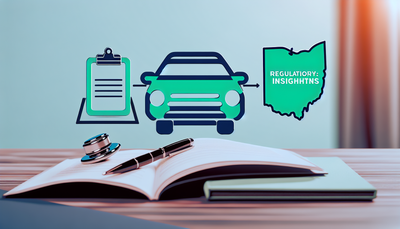Understanding Minimum Coverage Requirements Under Ohio Law

Understanding Minimum Coverage Requirements Under Ohio Law
When you're a driver in the Buckeye State, understanding your legal obligations can save you from costly mistakes. One of the most important — yet often overlooked — responsibilities is ensuring your car insurance meets minimum coverage requirements under Ohio law.
Let’s break down what this means, why it’s essential, and how you can stay on the right side of the law while protecting yourself and others on the road.
What Is Minimum Coverage?
Minimum coverage refers to the least amount of car insurance you are legally required to carry in your state. In Ohio, these requirements are defined by state legislation and are enforced to ensure that drivers can cover costs in case of an accident.
As of the latest updates, Ohio law mandates the following minimum liability coverage:
- $25,000 for bodily injury or death of one person in an accident
- $50,000 for bodily injury or death of two or more people in an accident
- $25,000 for property damage per accident
These three numbers — often referred to as 25/50/25 — make up the foundation of Ohio’s car insurance requirements.
Why Does Ohio Require Minimum Coverage?
Ohio, like many other states, requires minimum coverage to protect all drivers and passengers on the road. Having basic liability coverage ensures that at-fault drivers can help pay for injuries or damages resulting from an accident.
Without these laws, victims might be left with medical bills or repair costs they can’t recover. It also helps reduce the number of uninsured drivers, which keeps insurance premiums more stable across the board.
What Happens if You Don’t Meet the Requirements?
Driving without adequate coverage in Ohio has serious consequences. If you're caught without the required insurance, you could face:
- Suspension of your driver’s license and vehicle registration
- Reinstatement fees (often several hundred dollars)
- Required filing of an SR-22 (a certificate proving you carry auto insurance)
- Increased insurance premiums
Repeat violations may lead to longer suspensions and even vehicle impoundment.
Is Minimum Coverage Enough?
While meeting Ohio’s minimum requirements keeps you legal, it may not fully protect you financially in the event of a major accident. Medical expenses and vehicle repair costs can easily exceed the minimum limits, leaving you personally liable for the difference.
Many drivers opt for higher coverage limits or add options like:
- Uninsured/Underinsured Motorist Coverage
- Comprehensive Coverage
- Collision Coverage
- Medical Payments Coverage
These extra protections provide peace of mind and can save you money in the long run.
Tips for Staying Compliant and Protected
- Regularly review your policy: Make sure you maintain at least the minimum required coverage.
- Shop around: Compare quotes from different insurers to find affordable options with better protection.
- Ask about discounts: Good driver, student, and bundling discounts can help you save.
- Understand your needs: If you have a valuable vehicle or commute daily, minimum coverage might not be enough.
Final Thoughts
Understanding the minimum coverage requirements under Ohio law is more than just checking a box — it's about being a responsible driver. While the 25/50/25 rule keeps you legally compliant, exploring additional coverage options can offer stronger protection for you and your family.
Stay informed, stay insured, and drive safely!
Disclaimer: Insurance requirements and laws are subject to change. Always consult with a licensed insurance professional or check the Ohio Department of Insurance for the most current information.







